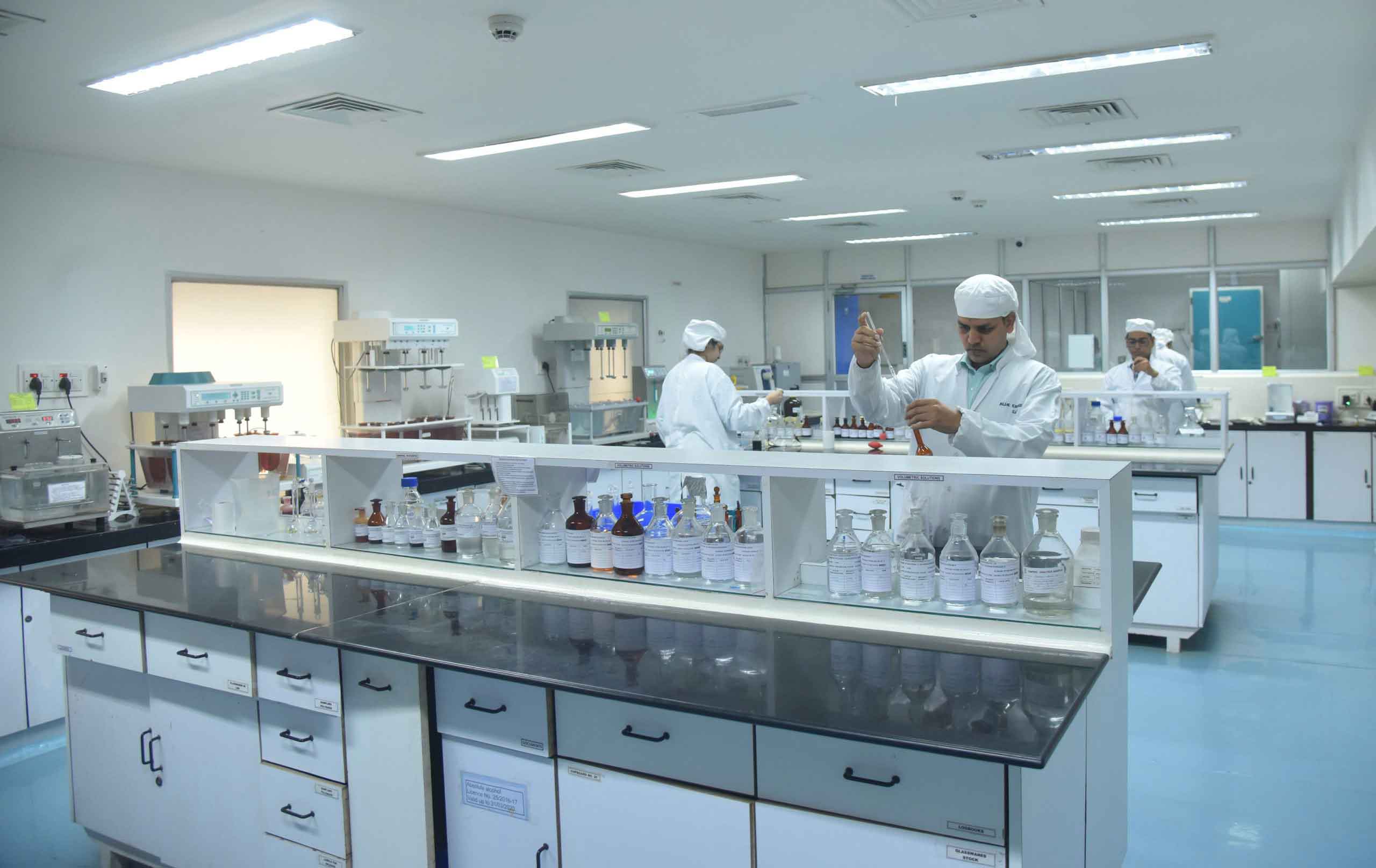
Javaneh Poosh Parseh Company’s specialized laboratory

Javaneh Poosh Parseh Company’s specialized laboratory
The quality control unit, as one of the most important operational units, is responsible for defining, measuring and monitoring quality parameters and preventing the production and shipment of non-conforming products. Quality control, in addition to making quality accessible, also increases the efficiency of the organization's activity. gives
The quality control unit of Jovane Posh Parse Company is a completely independent unit that can be a reliable reference for making quality decisions for the products produced by Javaneh Poosh Parseh. Quality control is carried out in the following three stages:
Quality control of raw materials
Control during production
Final control
The supplies and equipment of this laboratory as well as implementation methods have been prepared to meet the requirements of national and international standards.
Javaneh Poosh Parseh
Reference Standard: 1-6980
Melt flow rate (MFR) is the simplest and most basic standard method for determining and comparing the melt behavior of different types of thermoplastic polymers. In this method, a polymer sample is first preheated at a specific temperature for a certain period of time. Then, the melt is subjected to a standard weight from inside the die, located in the lower part of the MFR apparatus, and extruded. The amount of melt extruded from the die in grams during a ten-minute period is called its MFR. By applying the same weight, a higher MFR of a melt polymer sample indicates lower viscosity, and a lower viscosity implies a lower molecular weight of that sample. Therefore, MFR is considered the simplest standard method for the relative comparison of molecular weight of different grades of
Reference Standards: INSO6621-1 & INSO6621-3
Tensile property testing is one of the destructive tests in the field of materials science, where a sample is subjected to uniaxial tensile stress until it reaches its breaking point. The results obtained from the test are commonly used for material selection, quality control, and predicting how a material will react under various other forces. The properties directly measured through tensile property testing include ultimate tensile strength, maximum elongation, and minimum reduction in cross-sectional area of the sample. Additionally, the following properties can be determined from these measurements: Young’s modulus, Poisson’s ratio, yield strength, and strain-hardening behavior of the material. Uniaxial tensile property testing is used for homogeneous materials, while biaxial testing is employed for non-homogeneous materials such as composites.
Reference Standard: INSO 7090-1
Density is defined as the ratio of mass (m) of a sample to its volume (v) at a specific temperature (t). In the measurement of density for solids and liquids, mass is usually expressed in grams (g) or kilograms (kg), and volume is expressed in cubic centimeters (cm3) or cubic meters (m3). Therefore, density is measured in units of kilograms per cubic meter (kg/m3) or grams per cubic centimeter (g/cm3). Density indicates how compacted the mass of a substance is.
Reference Standard: INSO 20059
The use of pigments, specifically for smoke, aims to make polymers resistant to degradation caused by ultraviolet radiation. The dispersion of smoke particles or pigment in the polymer and the final product is important to maintain the physical, mechanical properties, and surface protection. To measure the dispersion of particles, small samples of raw materials or small cut pieces are compressed between microscope slides, and the resulting specimens are examined microscopically.
Reference Standard: INSO 20059
The use of pigments, specifically for smoke, aims to make polymers resistant to degradation caused by ultraviolet radiation. The dispersion of smoke particles or pigment in the polymer and the final product is important to maintain the physical, mechanical properties, and surface protection. To measure the dispersion of particles, small samples of raw materials or small cut pieces are compressed between microscope slides, and the resulting specimens are examined microscopically.
Reference Standard: INSO21558
Visual inspection, although the simplest quality control test, is of special importance as many visual defects can impact performance. Examining the visual appearance of plastics provides a detailed description of defects and their effects, aiding in determining the status of selected samples.
Reference Standard: INSO21558
Dimensional measurements in the Javaneh Poosh Parseh laboratory are performed by trained specialists in the laboratory environment at a temperature of (23±2°C). First, the surface of the sample is examined for any flaws or factors, such as markings, separation lines, or wrinkles, that can affect thickness measurements. If any of these factors are found, their type and impact on the measurements are recorded and reported. The micrometer is moved on the film surface until the maximum or minimum thickness position is identified in the selected cross-section, and then the observed values are recorded.
Standard Reference: EN ISO 7765-1
The impact test is a standard method for determining the energy required to break materials under dynamic stress. The impact test is based on determining the energy needed to break greenhouse cover films due to impact. The information obtained from this test is highly valuable in understanding the behavior of materials in real-world conditions. The purpose of the impact test is to simulate real conditions in an effort to prevent breakage and predict sample failure. The test samples are cut pieces of films that represent a load or a production setup. Film samples are placed at specific locations on a flat surface and a weight is dropped from a certain height onto them. If no breakage occurs, the result is considered acceptable.
Reference Standard: INSO21558
During the stretching of greenhouse films, in order to eliminate wrinkles, the greenhouse covering is subjected to constant stress, which also applies to the covering during service. The application of constant stress leads to consecutive elongation of the polymer component. In polymers, when a constant stress is applied, the polymer part constantly elongates or, in other words, undergoes strain. This phenomenon is called creep and, over time, it can create defects in polymer parts under constant stress. Polyethylene coverings installed in greenhouses are no exception to this rule and are subject to creep during installation and service. The magnitude of stress applied to the polyethylene covering during installation, greenhouse ambient temperature, and most importantly, the formulation and number of greenhouse nylon layers, all have an impact on the final creep. Ultimately, creep in greenhouse nylon can lead to cracking in the covering and cause damage to the cultivated plants.
Plastic impact resistance test
Greenhouse plastic tensile strength test
You can use the following methods to communicate with Joane Posh Parse:
phone : 09017606868
07137742366-9
Address : 203 St., South Kooshesh Blvd. Kooshesh Sq., Shiraz Great Industrial Town
- Consultation request form
Our colleagues will contact you as soon as possible and offer you the best solution.
